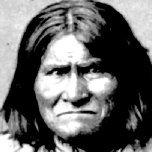
A tent is a shelter consisting of sheets of fabric or other material draped over, attached to a frame of poles or a supporting rope. While smaller tents may be free-standing or attached to the ground, large tents are usually anchored using guy ropes tied to stakes or tent pegs. First used as portable homes by nomads, tents are now more often used for recreational camping and as temporary shelters.
Tents range in size from "bivouac" structures, just big enough for one person to sleep in, up to huge circus tents capable of seating thousands of people. Tents for recreational camping fall into two categories. Tents intended to be carried by backpackers are the smallest and lightest type. Small tents may be sufficiently light that they can be carried for long distances on a touring bicycle, a boat, or when backpacking. The second type are larger, heavier tents which are usually carried in a car or other vehicle. Depending on tent size and the experience of the person or people involved, such tents can usually be assembled (pitched) in between 5 and 25 minutes; disassembly (striking) takes a similar length of time. Some very specialized tents have spring-loaded poles and can be pitched in seconds, but take somewhat longer to strike (take down and pack).
Over the past decade, tents have also been increasingly linked with homelessness crises in the United States, Canada, and other regions. Places of multiple homeless people living in tents closely pitched or plotted near each other are often referred to as tent cities.
History
A form of tent called a teepee or tipi, noted for its cone shape and peak smoke hole, was also used by Native American tribes and Aboriginal Canadians of the Plains Indians since ancient times, variously estimated from 10,000 to 4,000 years BC.
Tents were used at least as far back as the early Iron Age. They are mentioned in the Bible; for example, in Genesis 4:20 Jabal is described as "the first to live in tents and raise sheep and goats". The Roman Army used leather tents, copies of which have been used successfully by modern re-enactors. Various styles developed over time, some derived from traditional nomadic tents, such as the yurt.
Most military tents throughout history were of a simple ridge design. The major technological advance was the use of linen or hemp canvas for the canopy versus leather for the Romans. The primary use of tents was still to provide portable shelter for a small number of men in the field.
Use
Tents are used as habitation by nomads, recreational campers, soldiers, and disaster victims. Tents are also typically used as overhead shelter for festivals, weddings, backyard parties, major corporate events, excavation (construction) covers, and industrial shelters.
Traditional
Tents have traditionally been used by nomadic people all over the world, such as Native Americans, Mongolian, Turkic and Tibetan Nomads, and the Bedouin.
Homelessness
Tents have been increasingly used as shelter for homeless people in the U.S., especially for those in California, Oregon, and Washington. Encampments have spiked in usage and living in the mid-to-late 2010s. Tent cities, places of high number of tents inhabited by homeless and travelers/vagabonds have also, are also commonly found in major cities in the South, including Austin, Texas, which had passed a restriction on homeless encampments in May 2021.
If you want to read a LOT more, go here: https://en.wikipedia.org/wiki/Tent
- 1 (16-ounce) package elbow macaroni
- 2 (10-3/4-ounce) cans condensed Cheddar cheese soup
- 2 cups milk
- 6 cups (1-1/2 pounds) shredded sharp Cheddar cheese, reserving 1 cup for topping
- 3 tablespoons butter, melted
- 1 1/2 teaspoons dry mustard
- 1 teaspoon salt
- 3/4 teaspoon black pepper
- Preheat oven to 350º. Coat a 9- x 13-inch baking dish with cooking spray.
- Cook macaroni according to package directions; drain and place back into pot. Stir in remaining ingredients except reserved cheese.
- Pour mixture into prepared baking dish and sprinkle with reserved cheese. Bake 35 to 40 minutes, or until heated through.
- 1 pound cooked and peeled medium-sized shrimp

1970 – Phil Mickelson, American golfer
Nursing assistants work in hospitals and nursing homes alike, performing everyday living tasks for the elderly, chronically ill, or rehabilitation patients who cannot care for themselves. Of course, nursing assistants require in-depth training to gain the necessary qualifications to cover a wide scope of responsibilities. The American Red Cross, as well as other providers, provide classes to study for nursing assistants. Although states may distribute CNA certification exams, their certification follows a standard set of qualifications created by the government.
Career Nursing Assistants also play a host of roles in the lives of residents in nursing homes, hospitals, and long-term care facilities. Amazingly, they often assist people to remain independent in their own homes for as long as possible. In addition, a CNA provides essential support for patient needs. This includes promoting mental, physical, emotional, social, and spiritual well-being, too.














